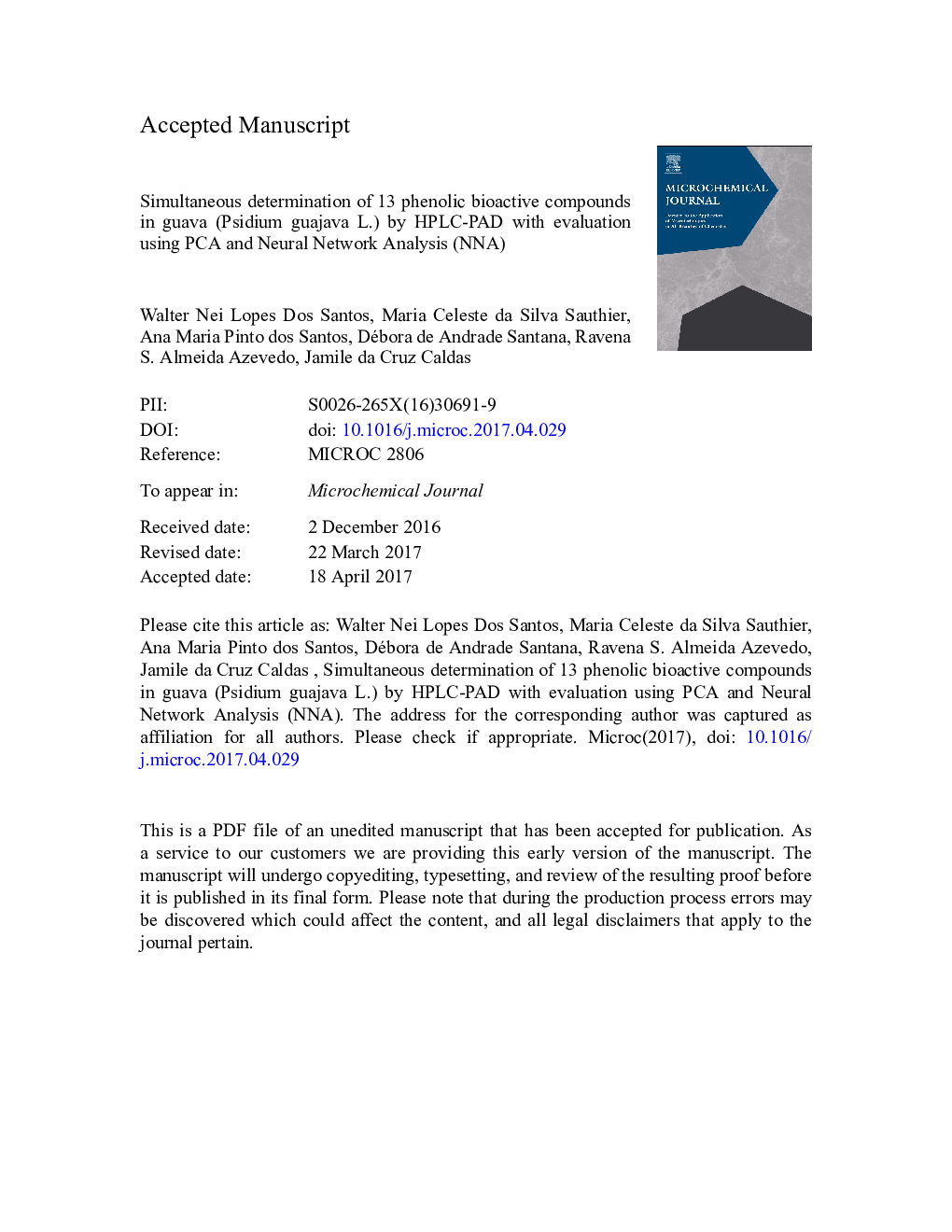| کد مقاله | کد نشریه | سال انتشار | مقاله انگلیسی | نسخه تمام متن |
|---|---|---|---|---|
| 5139074 | 1494861 | 2017 | 29 صفحه PDF | دانلود رایگان |
عنوان انگلیسی مقاله ISI
Simultaneous determination of 13 phenolic bioactive compounds in guava (Psidium guajava L.) by HPLC-PAD with evaluation using PCA and Neural Network Analysis (NNA)
دانلود مقاله + سفارش ترجمه
دانلود مقاله ISI انگلیسی
رایگان برای ایرانیان
کلمات کلیدی
موضوعات مرتبط
مهندسی و علوم پایه
شیمی
شیمی آنالیزی یا شیمی تجزیه
پیش نمایش صفحه اول مقاله

چکیده انگلیسی
A reliable, simple and accurate method was developed to simultaneously determine 13 bioactive phenolic compounds in guava (Psidium guajava L.) by reversed-phase high-performance liquid chromatography with diode array detection (HPLC-DAD). The proposed methodology was fully validated and proven successful in the analysis of methanolic extracts of lyophilized whole guavas at two maturation stages: green and ripe. The quantification of phenolic compounds revealed that the highest concentrations (mg 100 gâ 1 DW) in all samples were: gallic acid (2.43-7.28); chlorogenic acid (1.83-10.75); ellagic acid (5.72-30.60); catequin (1.09-13.09) and rutin (5.09-45.02). Total polyphenol content (55-516 mg GAE 100 gâ 1); total flavonoid content (35.26-75.19 mg QE 100 gâ 1); antioxidant capacity in DPPH and ABTS assays (5.22-5.62 and 17.63-18.74 TEAC·100 gâ 1 DW, respectively) were also determined, and can be related to the diverse range of phenolics detected. The results (TPC and TFC) for most green samples were higher than for ripe samples. There were no significant differences for antioxidant activity between the samples analyzed. Applying Pearson correlation test, the results indicate a significant positive correlation between the variables. The exploratory evaluation of guava samples was performed through Principal Component Analysis (PCA). The bioactive phenolics that most contributed to the variability between green and ripe fruits were: rutin, catequin, and: elagic, syringic, cafeic, transcinamic and p-coumaric acids. Neural Network Analysis (NNA) was applied for more insights about cluster separation and the influence of each variable. The parameters evaluated for NNA indicated good separation in two clusters: green and ripe fruits.
ناشر
Database: Elsevier - ScienceDirect (ساینس دایرکت)
Journal: Microchemical Journal - Volume 133, July 2017, Pages 583-592
Journal: Microchemical Journal - Volume 133, July 2017, Pages 583-592
نویسندگان
Walter Nei Lopes dos Santos, Maria Celeste da Silva Sauthier, Ana Maria Pinto dos Santos, Débora de Andrade Santana, Ravena S. Almeida Azevedo, Jamile da Cruz Caldas,